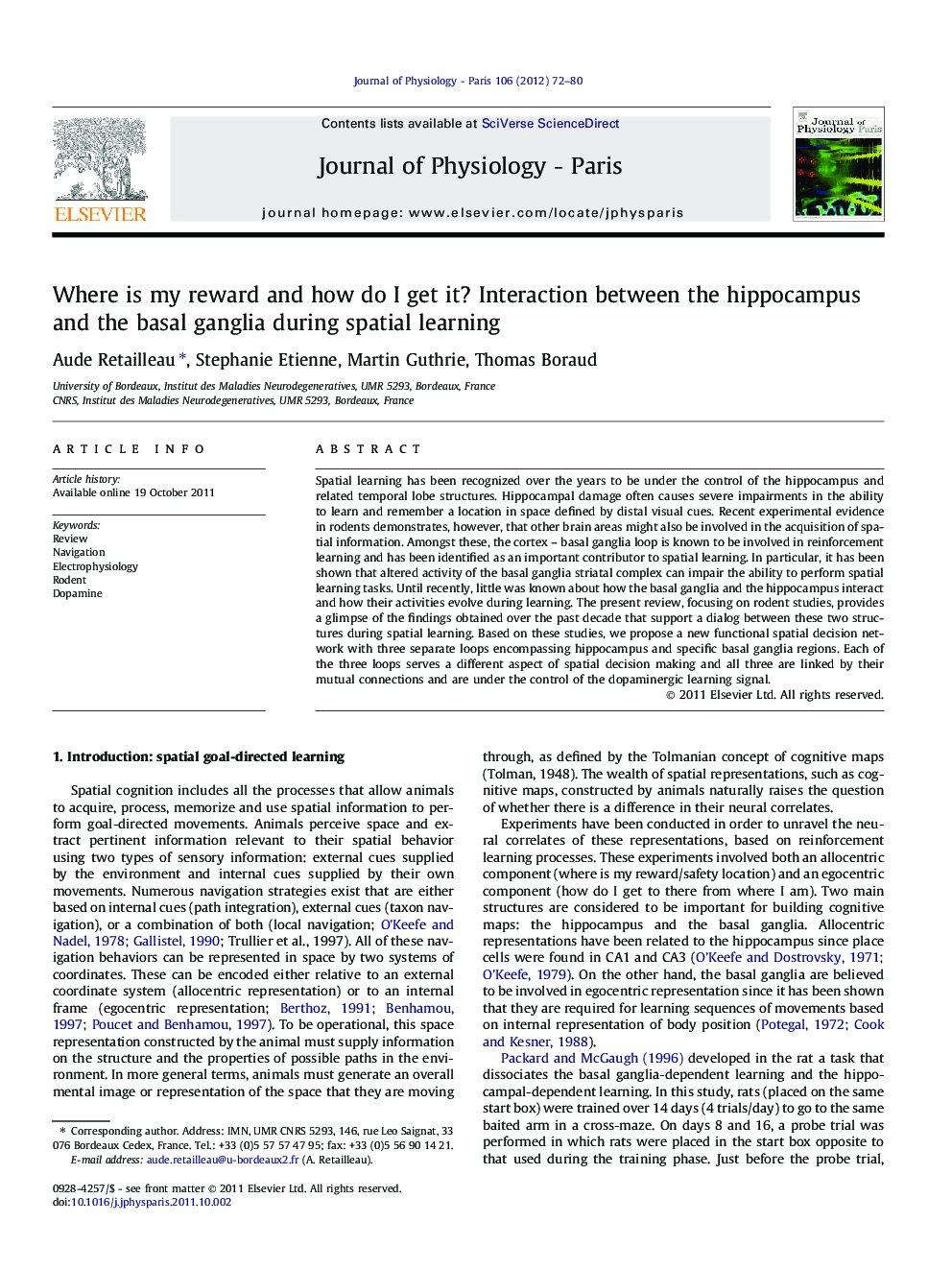| Article ID | Journal | Published Year | Pages | File Type |
|---|---|---|---|---|
| 2842325 | Journal of Physiology-Paris | 2012 | 9 Pages |
Spatial learning has been recognized over the years to be under the control of the hippocampus and related temporal lobe structures. Hippocampal damage often causes severe impairments in the ability to learn and remember a location in space defined by distal visual cues. Recent experimental evidence in rodents demonstrates, however, that other brain areas might also be involved in the acquisition of spatial information. Amongst these, the cortex – basal ganglia loop is known to be involved in reinforcement learning and has been identified as an important contributor to spatial learning. In particular, it has been shown that altered activity of the basal ganglia striatal complex can impair the ability to perform spatial learning tasks. Until recently, little was known about how the basal ganglia and the hippocampus interact and how their activities evolve during learning. The present review, focusing on rodent studies, provides a glimpse of the findings obtained over the past decade that support a dialog between these two structures during spatial learning. Based on these studies, we propose a new functional spatial decision network with three separate loops encompassing hippocampus and specific basal ganglia regions. Each of the three loops serves a different aspect of spatial decision making and all three are linked by their mutual connections and are under the control of the dopaminergic learning signal.
► We focus on dialog between the hippocampus and the basal ganglia in spatial learning. ► We propose a new functional spatial decision network with three separate loops. ► These loops encompass hippocampus and specific basal ganglia regions. ► Dopamine could play a key role on spatial navigation at different level of these loops.
